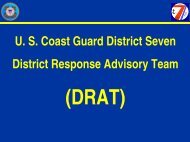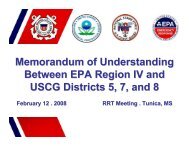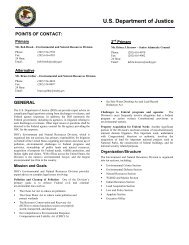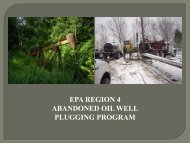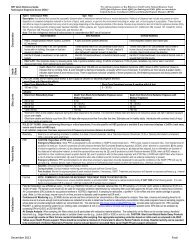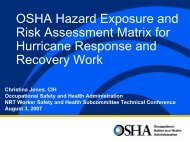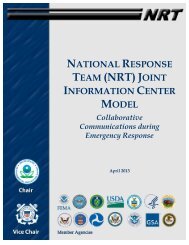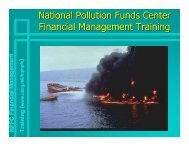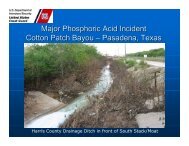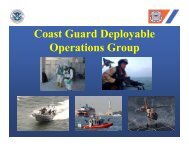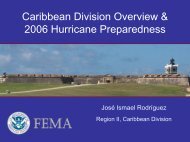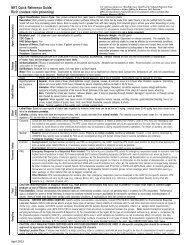USE OF DISPERSANTS - U.S. National Response Team (NRT)
USE OF DISPERSANTS - U.S. National Response Team (NRT)
USE OF DISPERSANTS - U.S. National Response Team (NRT)
- No tags were found...
You also want an ePaper? Increase the reach of your titles
YUMPU automatically turns print PDFs into web optimized ePapers that Google loves.
Adequate protection may be achieved by minimizing exposure. Vessels monitoring dispersant operations should beupwind and shall keep a safe distance away (300 yards) during aerial application. In general, using respirators shouldnot be a routine practice for personnel involved in dispersant application and monitoring. However, under someconditions, when monitoring indicates that overexposure to oil or dispersant may occur, respirators may be used perrecommendation of the site safety officer.Personnel loading the dispersants on planes and vessels and otherwise handling large quantities of the productshould exercise greater caution and protection. They should wear non-permeable clothing, boots, and gloves, use eyeprotection, and exercise safe loading transfer of the material. Since loading of dispersant-applying aircraft may bedone many miles away, prudent safety management requires that this operation will be monitored by a safetysupervisor at the loading site.MonitoringMonitoring may be conducted to evaluate the concentration of hazardous chemicals, and to justify the level of PPE.Refer to attachment 1F. GENERAL SITE SAFETY AND HEALTH PROCEDURES.The following controls shall be observed (check appropriate)__ PFD: All personnel working in boats or near water (10 feet or less) shall wear Coast Guard approved personalflotation devices (PFDs).__ Buddy System: Personnel must work within sight of a partner at all times.__ Fires: All vessels shall carry fully charged and operational fire extinguishers.__ Heat Stress: The site safety officer shall make heat stress determinations throughout the day. If it is determinedthat a heat stress hazard exists, an alert shall be passed to all teams. Cold water or lightly sweetened drinks shallbe available on all vessels, and their drinking encouraged.__ Cold Stress: Workers shall be provided with adequate warm clothing. The Site Safety Officer shall make coldstress determinations throughout the day when temperatures fall below 50 degrees F. For prolonged watertemperatures below 59 degrees F, or a combined water and air temperature less than 100 degrees F, exposuresuits shall be worn by personnel working/traveling in small boats or aircraft over water.__ UV Light Exposure: Sunscreens of protection factor 15 (or greater), and UV tinted safety glasses shall be madeavailable for response personnel as needed.__ Helicopter Operations: See attachment 2G. PERSONAL PROTECTIVE EQUIPMENT (PPE) See attachment 4 for level D and C ensembles.H. DECONTAMINATION PROCEDURESAll contaminated items shall either be decontaminated or disposed off appropriately.



